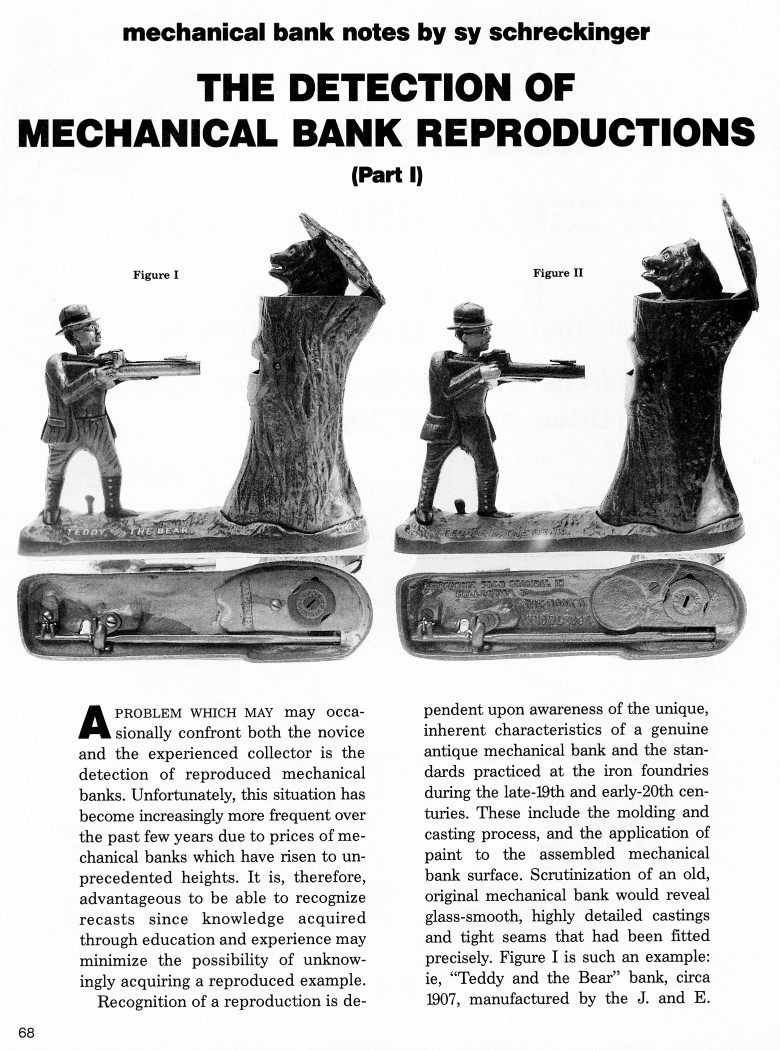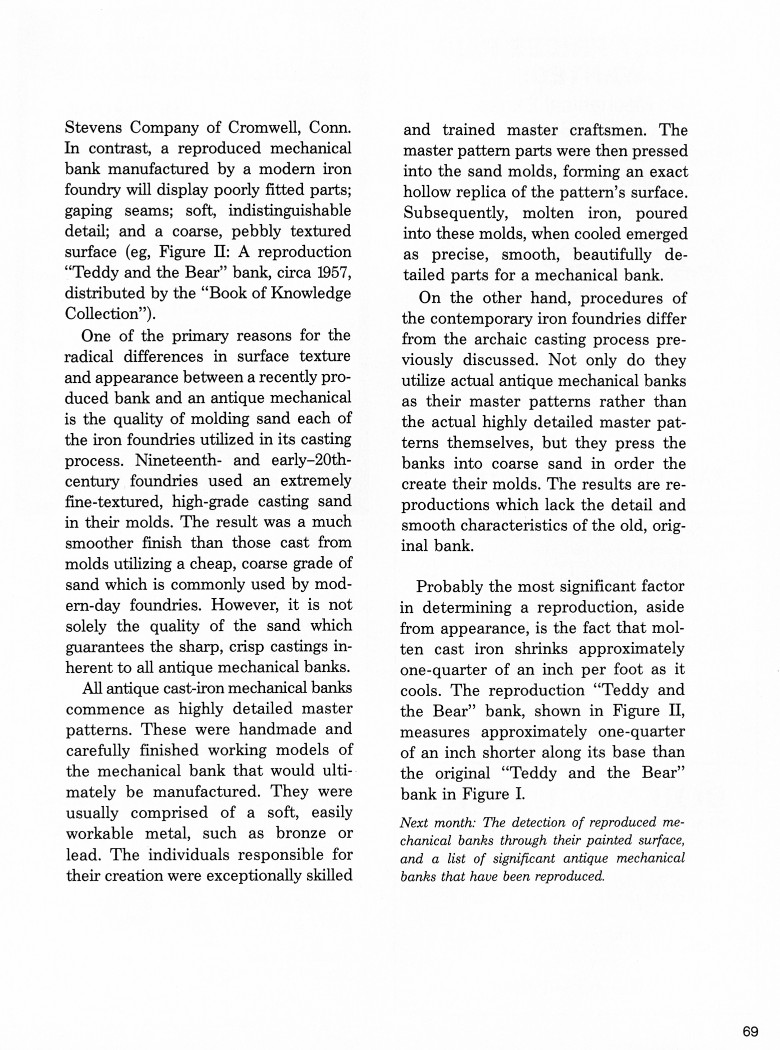|
The Detection of
Mechanical Bank Reproductions
(Part I)
by Sy Schreckinger – ANTIQUE TOY WORLD Magazine – November,
1993
A problem which may occasionally confront both
the novice and the experienced collector is the detection of reproduced
mechanical banks. Unfortunately, this situation has become increasingly
more frequent over the past few years due to prices of mechanical banks
which have risen to unprecedented heights. It is, therefore, advantageous
to be able to recognize recasts since knowledge acquired through education
and experience may minimize the possibility of unknowingly acquiring a
reproduced example.
Recognition of a reproduction is dependent upon awareness of the
unique, inherent characteristics of a genuine antique mechanical bank and
the standards practiced at the iron foundries during the late-19th and
early-20th centuries. These include the molding and casting process, and
the application of paint to the assembled mechanical bank surface. Scrutinization of an old, original mechanical bank would reveal
glass-smooth, highly detailed castings and tight seams that had been
fitted precisely. Figure I is such an example: i.e., "Teddy and the Bear"
bank, circa 1907, manufactured by the J. and E. Stevens Company of
Cromwell, Conn. In contrast, a reproduced mechanical bank manufactured by
a modern iron foundry will display poorly fitted parts; gaping seams;
soft, indistinguishable detail; and a coarse, pebbly textured surface (eg,
Figure II: A reproduction "Teddy and the Bear" bank, circa 1957,
distributed by the "Book of Knowledge Collection").
One of the primary reasons for the radical differences in surface
texture and appearance between a recently produced bank and an antique
mechanical is the quality of molding sand each of the iron foundries
utilized in its casting process. Nineteenth and early-20thcentury
foundries used an extremely fine-textured, high-grade casting sand in
their molds. The result was a much smoother finish than those cast from
molds utilizing a cheap, coarse grade of sand which is commonly used by
modern-day foundries. However, it is not solely the quality of the sand
which guarantees the sharp, crisp castings inherent to all antique
mechanical banks.
All antique cast-iron mechanical banks commence as highly detailed
master patterns. These were handmade and carefully finished working models
of the mechanical bank that would ultimately be manufactured. They were
usually comprised of a soft, easily workable metal, such as bronze or
lead. The individuals responsible for their creation were exceptionally
skilled and trained master craftsmen. The master pattern parts were then
pressed into the sand molds, forming an exact hollow replica of the
pattern's surface. Subsequently, molten iron, poured into these molds,
when cooled emerged as precise, smooth, beautifully detailed parts for a
mechanical bank.
On the other hand, procedures of the contemporary iron foundries
differ from the archaic casting process previously discussed. Not only do
they utilize actual antique mechanical banks as their master patterns
rather than the actual highly detailed master patterns themselves, but
they press the banks into coarse sand in order the create their molds. The
results are reproductions which lack the detail and smooth characteristics
of the old, original bank.
Probably the most significant factor in determining a reproduction,
aside from appearance, is the fact that molten cast iron shrinks
approximately one-quarter of an inch per foot as it cools. The
reproduction "Teddy and the Bear" bank, shown in Figure II, measures
approximately one-quarter of an inch shorter along its base than the
original "Teddy and the Bear" bank in Figure I.
Next month: The detection of reproduced mechanical banks through
their painted surface, and a list of significant antique mechanical banks
that have been reproduced.
|


